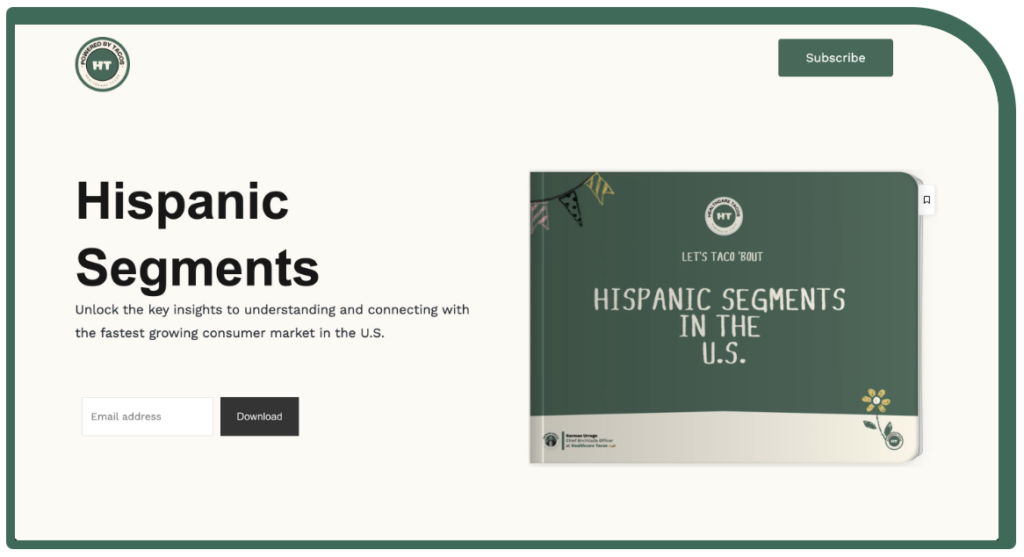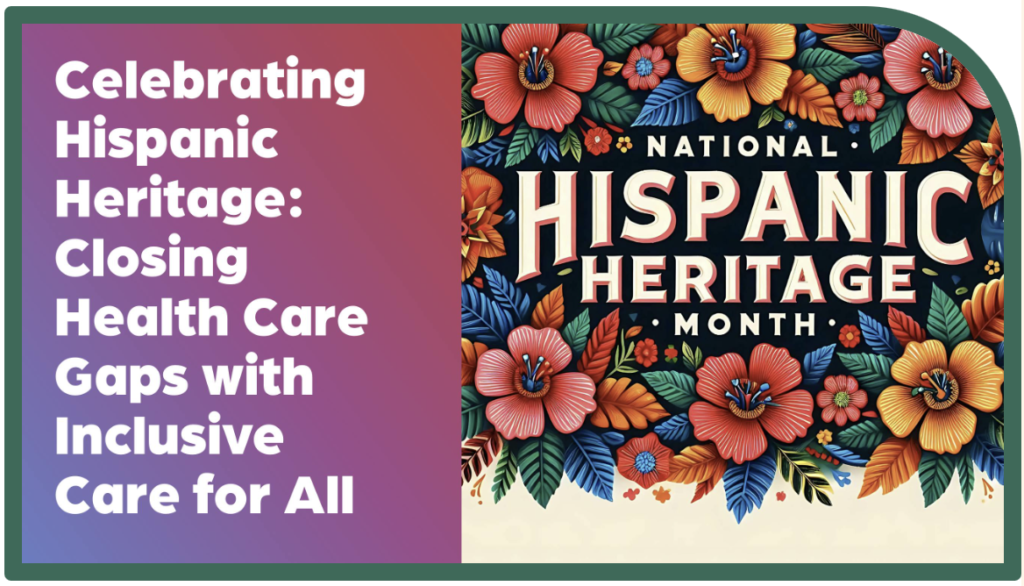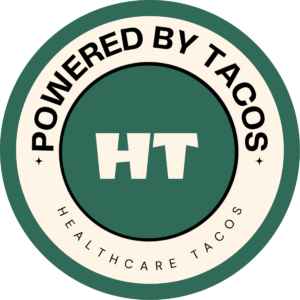

Hola Amigos, let’s talk about Hispanic segments.
Last year, I reviewed a Hispanic healthcare program that was about to go live, but after digging into the details.
My advice was to simply cancel the launch to work on their primary persona.
As good as the intentions were.
They had NOT considered one of the most important things.
Who was their ideal target patient?
Expecting one-size-fits-all healthcare to work is like going to McDonald’s for tacos; you will not get what you want.
Now, if you’re ready to make a real impact in the Hispanic community, it’s essential to start by understanding who you are serving.
Let’s taco ‘bout it.
Hola Amigos, let’s talk about Hispanic segments.
Last year, I reviewed a Hispanic healthcare program that was about to go live, but after digging into the details.
My advice was to simply cancel the launch to work on their primary persona.
As good as the intentions were.
They had NOT considered one of the most important things.
Who was their ideal target patient?
Expecting one-size-fits-all healthcare to work is like going to McDonald’s for tacos; you will not get what you want.
Now, if you’re ready to make a real impact in the Hispanic community, it’s essential to start by understanding who you are serving.
Let’s taco ‘bout it.
![]()
Three Insights 🌶️
I. First-Generation Immigrant
This specific group is like trying a new recipe, they are navigating unfamiliar territory and need extra guidance.
They represent the heart of our community since they are individuals who have recently immigrated.
And of course, face the most typical challenges such as language barriers, cultural differences, and a healthcare system foreign to them.
A couple of their common characteristics are language proficiency, and cultural values.
But why do these characteristics matter?
For first-generation immigrants, our healthcare system in America can feel overwhelming and super confusing.
I mean, let’s face it.
You have been in healthcare for a long time, and you still are trying to make sense of our system.
Right?
Now imagine a person that just arrived here.
To them, healthcare is NOT just about medical treatment, but about trust and family inclusion.
But, let’s not worry.
To tailor a Spanish program, simply start by offering bilingual staff to explain procedures easily. Also, involve family members in decisions to honor and respect cultural values.
See, that is not that difficult, but if you need assistance. You can always contact me at (German@Healthcaretacos.com).
Also, in case you did not know.
This segment is also called “The Newly Arrived.” Feel free to read more about the Hispanic segments here.
A micro book I put together for people to learn more about this.

II. The Elderly Abuela
The “Abuela” persona is like a well-worn recipe, rich with tradition.
Elderly patients rely on family for guidance, and many still hold strong to traditional remedies.
However, they are open to modern treatments as long as they feel understood and respected.
Language proficiency and cultural values are common characteristics to highlight in this segment.
But why are these points important?
For elderly patients, the healthcare system can feel unfamiliar as a new dish.
They need care that speaks their language, while respecting deep rooted traditions carried with them all since they were kids.
Now, to customize a program for the Abuelitas.
Take time to explain treatments with respect for their values and traditions as well, but do not forget to involve la familia in all decisions to honor cultural preferences.
III. The Caregiver Millennial
This persona is like a plate of fresh guac, balancing traditional flavors with modern tastes.
They are often responsible for bridging the gap between Spanish speaking families and the healthcare system.
Please note.
While they are bilingual, their family’s reliance on Spanish creates the need for programs that serve both.
As the ABUELITA group, their characteristics are language proficiency, and cultural values but slightly different.
Since, they maintain Hispanic traditions, with a modern outlook on healthcare, and act as the cultural and linguistic mediator for older generations.
In other words.
They truly want a system that does NOT just cater to them, but also to their family.
Whenever you get a chance.
Tailor, bilingual resources to ensure medical information is available in Spanish for relatives to understand.
And please do not forget to provide culturally relevant in person and digital front door experiences that are related to them.
Once again, you can learn more about the Hispanic segments here.
Insights
I. First-Generation Immigrant
This specific group is like trying a new recipe, they are navigating unfamiliar territory and need extra guidance.
They represent the heart of our community since they are individuals who have recently immigrated.
And of course, face the most typical challenges such as language barriers, cultural differences, and a healthcare system foreign to them.
A couple of their common characteristics are language proficiency, and cultural values.
But why do these characteristics matter?
For first-generation immigrants, our healthcare system in America can feel overwhelming and super confusing.
I mean, let’s face it.
You have been in healthcare for a long time, and you still are trying to make sense of our system.
Right?
Now imagine a person that just arrived here.
To them, healthcare is NOT just about medical treatment, but about trust and family inclusion.
But, let’s not worry.
To tailor a Spanish program, simply start by offering bilingual staff to explain procedures easily. Also, involve family members in decisions to honor and respect cultural values.
See, that is not that difficult, but if you need assistance. You can always contact me at (German@Healthcaretacos.com).
Also, in case you did not know.
This segment is also called “The Newly Arrived.” Feel free to read more about the Hispanic segments here.
A micro book I put together for people to learn more about this.

II. The Elderly Abuela
The “Abuela” persona is like a well-worn recipe, rich with tradition.
Elderly patients rely on family for guidance, and many still hold strong to traditional remedies.
However, they are open to modern treatments as long as they feel understood and respected.
Language proficiency and cultural values are common characteristics to highlight in this segment.
But why are these points important?
For elderly patients, the healthcare system can feel unfamiliar as a new dish.
They need care that speaks their language, while respecting deep rooted traditions carried with them all since they were kids.
Now, to customize a program for the Abuelitas.
Take time to explain treatments with respect for their values and traditions as well, but do not forget to involve la familia in all decisions to honor cultural preferences.
III. The Caregiver Millennial
This persona is like a plate of fresh guac, balancing traditional flavors with modern tastes.
They are often responsible for bridging the gap between Spanish speaking families and the healthcare system.
Please note.
While they are bilingual, their family’s reliance on Spanish creates the need for programs that serve both.
As the ABUELITA group, their characteristics are language proficiency, and cultural values but slightly different.
Since, they maintain Hispanic traditions, with a modern outlook on healthcare, and act as the cultural and linguistic mediator for older generations.
In other words.
They truly want a system that does NOT just cater to them, but also to their family.
Whenever you get a chance.
Tailor, bilingual resources to ensure medical information is available in Spanish for relatives to understand.
And please do not forget to provide culturally relevant in person and digital front door experiences that are related to them.
Once again, you can learn more about the Hispanic segments here.

![]()
Two Actionable Steps 🌮
I. Develop Materials for Each Persona
Here is the key.
Different personas mean different approaches, therefore, create customized materials for each individualized journey.
Follow these simple steps.
- For first-generation immigrants, offer clear, easy-to-understand resources, like a simple tortilla.
- Elderly patients need careful explanations that respect language and values, similar to slow cooked meals.
- Millennial caregivers need bilingual tools to help guide their families through our difficult system.
II. Train For Culture Competency
This is like preparing a mole, it is a rich and complex process that takes time, patience, and attention to detail.
Just as mole blends diverse ingredients to create a delicious flavor.
Your team needs to blend knowledge, sensitivity, and adaptability to meet the diverse needs of Hispanics.
Here is the reason behind it.
Each and every patient comes with unique cultural backgrounds, and understanding this is critical to delivering personalized care.
And, whether it is providing a clear explanation in the patient’s language or involving the family in critical decisions.
Your staff must be equipped to respond thoughtfully to different cultural expectations.
The best thing about this is that with simple ongoing training and real-world practice, members of your team can easily ensure every patient feels seen, respected, and understood.
Here are a few great points on how to improve cultural competence in Health care.

Actionable Steps
I. Craft Materials for Each Persona
Here is the key.
Different personas mean different approaches, therefore, create customized materials for each individualized journey.
Follow these simple steps.
- For first-generation immigrants, offer clear, easy-to-understand resources, like a simple tortilla.
- Elderly patients need careful explanations that respect language and values, similar to slow cooked meals.
- Millennial caregivers need bilingual tools to help guide their families through our difficult system.
II. Train For Culture Competency
This is like preparing a mole, it is a rich and complex process that takes time, patience, and attention to detail.
Just as mole blends diverse ingredients to create a delicious flavor.
Your team needs to blend knowledge, sensitivity, and adaptability to meet the diverse needs of Hispanics.
Here is the reason behind it.
Each and every patient comes with unique cultural backgrounds, and understanding this is critical to delivering personalized care.
And, whether it is providing a clear explanation in the patient’s language or involving the family in critical decisions.
Your staff must be equipped to respond thoughtfully to different cultural expectations.
The best thing about this is that with simple ongoing training and real-world practice, members of your team can easily ensure every patient feels seen, respected, and understood.
Here are a few great points on how to improve cultural competence in Health care.

![]()
One Piece of Advice 💃
I. Inclusion is a Journey
Take this from my heart.
Creating an environment that embraces inclusivity is similar to embarking on an adventure.
It’s perfectly fine if you do NOT reach your destination overnight because progress takes time.
And that is perfectly normal.
What counts is moving forward.
Every action you take, whether by providing language assistance or adapting to traditions, brings you closer to fostering trust with our Hispanic community.
Here is an article from one of my compadres about closing the Gaps with Inclusive care for all.

Piece of Advice
I. Inclusion is a Journey
Take this from my heart.
Creating an environment that embraces inclusivity is similar to embarking on an adventure.
It’s perfectly fine if you do NOT reach your destination overnight because progress takes time.
And that is perfectly normal.
What counts is moving forward.
Every action you take, whether by providing language assistance or adapting to traditions, brings you closer to fostering trust with our Hispanic community.
Here is an article from one of my compadres about closing the Gaps with Inclusive care for all.

![]()




